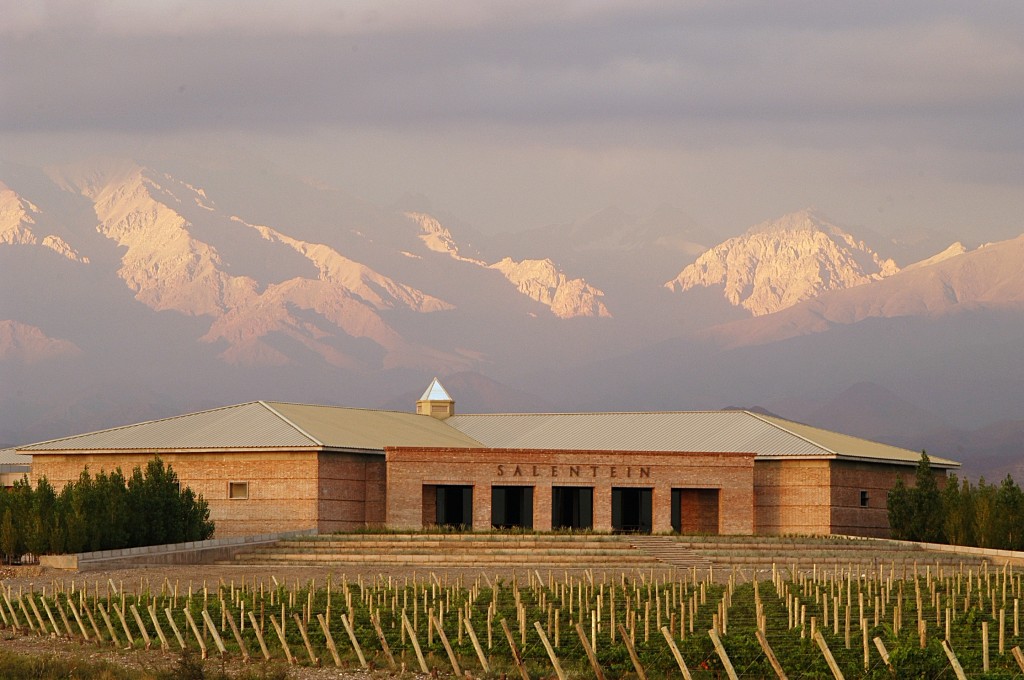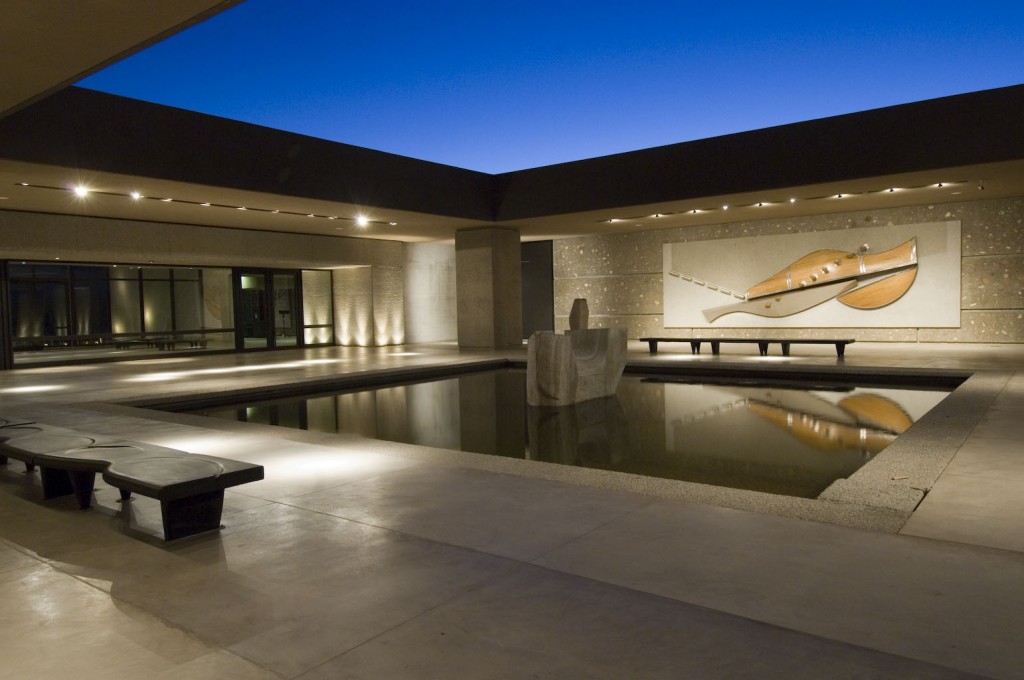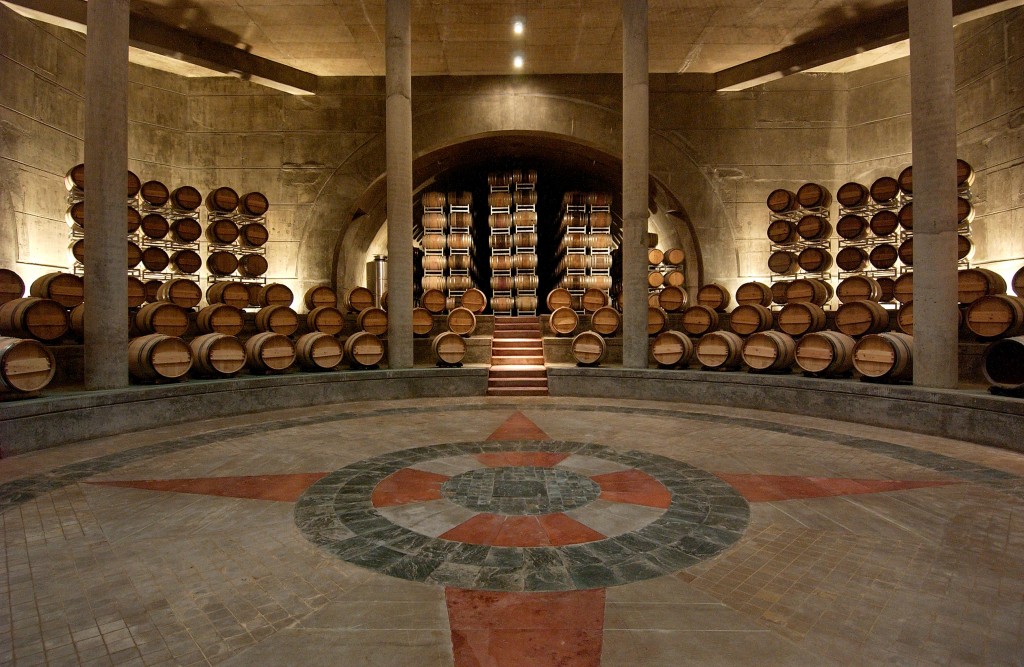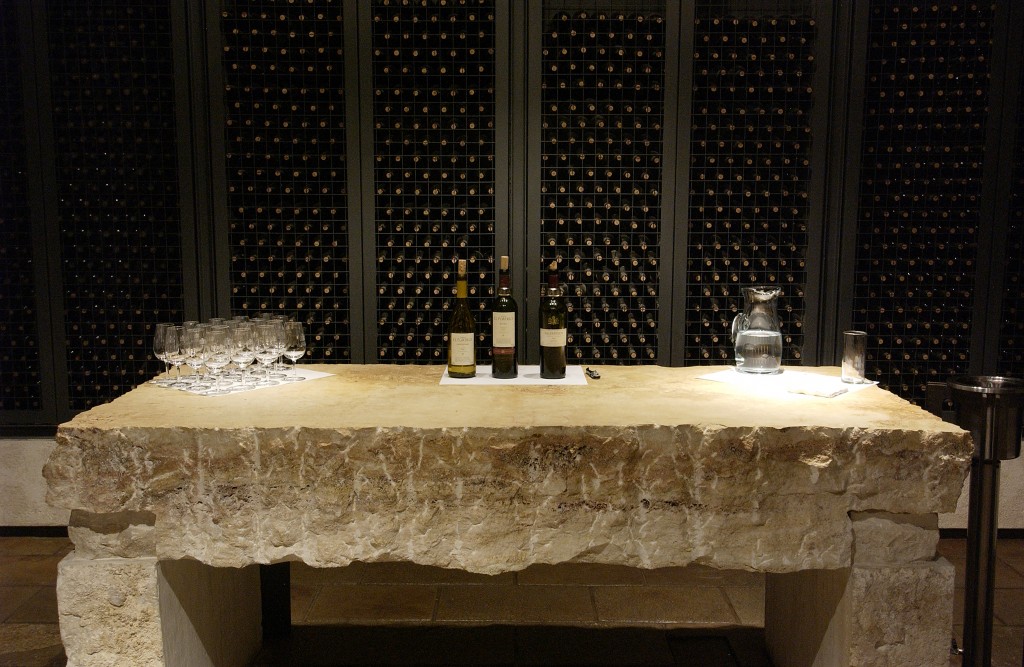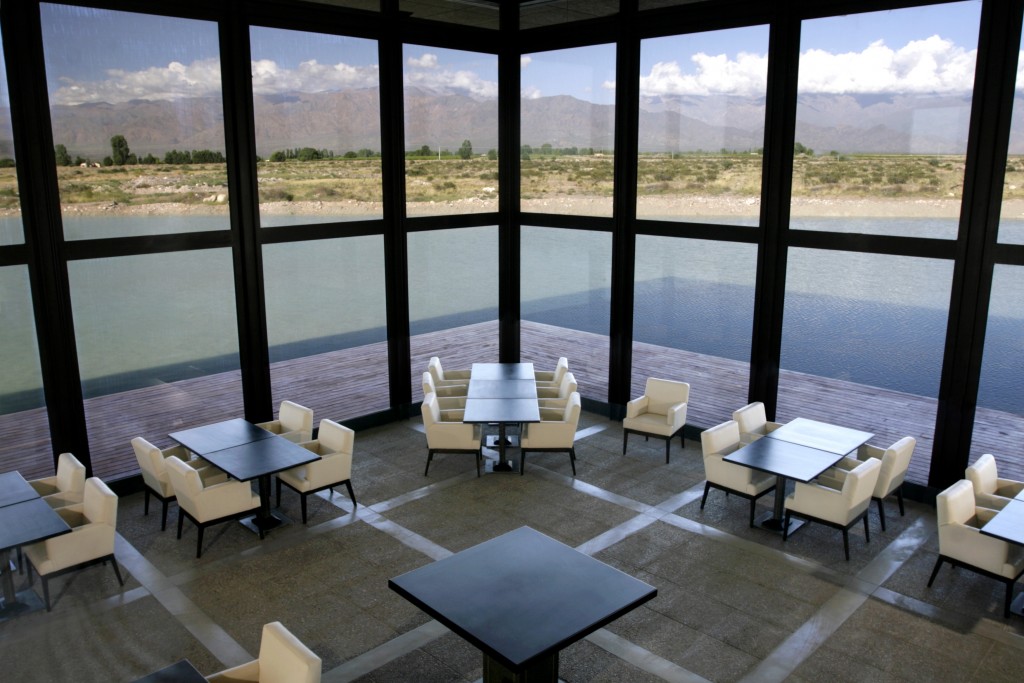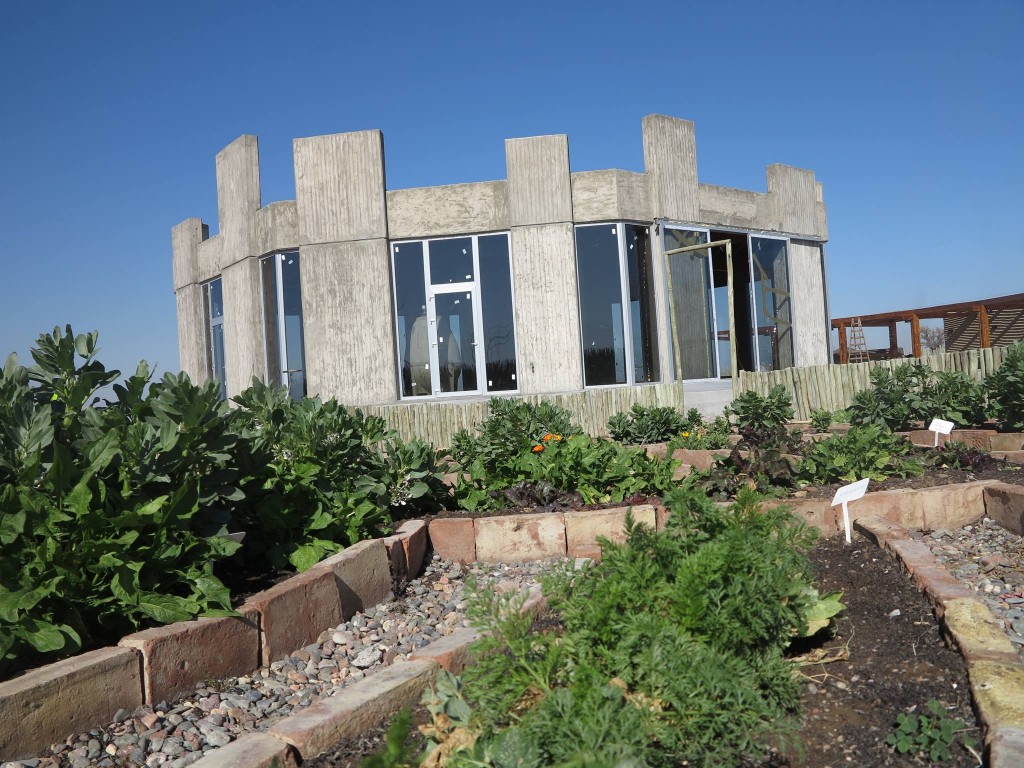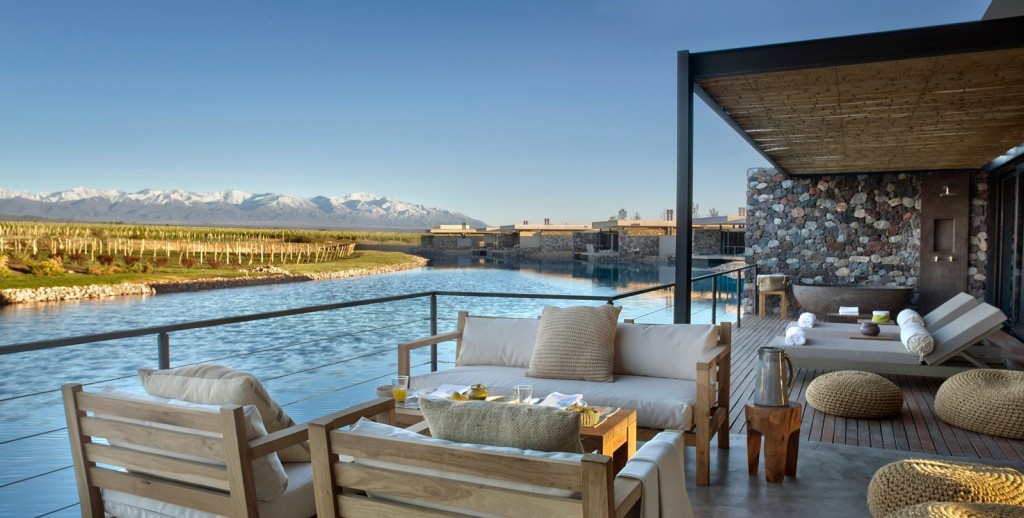The expression ‘garage winemaker’ comes from just that – making wine in a garage. A grape’s humble abode doesn’t need to be much more than a warehouse. However that doesn’t stop vintners and companies building the most elaborate mansions to house their prized wine. Mendoza is no exception, and along its wine route you will find some outstanding architectural gems to discover, which in many ways, can only be described as temples to wine.
With over 500 years of winemaking history, the ‘winery’ is not a new concept in Mendoza and at one point in history it was actually home to the largest winery in the world – the now abandoned Giol, which pumped out 300,000 hectare litres of wine annually in its prime over 100 years ago. However, the historical wineries were usually between two extremes – very very large, or very very small. Today you can still visit large historical wineries like Trapiche, Bodega Las Toneles, and Rutini, and you can also visit smaller historical wineries like Familia di Tomasso, Carinae, and Clos de Chacras.
For any seasoned Mendoza oenophile, you’ll notice that each of the historical wineries mentioned above, or in my post Top Historical Wineries in Mendoza are based in Maipu and Chacras de Coria. The new frontier for Mendoza’s winery architecture – moving beyond the traditional adobe mud walls and high cane roofs – is in the Uco Valley.
Over an hour from Mendoza city, in a beautiful green oasis framed by the imposing Andes mountains, the Uco Valley is an architect’s dream. Filled with plush foreign investment and showpiece wineries, there is no expense spared and style aplenty.
The first landmark winery of the valley, was Salentein. Finished at the turn of the century, Salentein is the first masterpiece by the renowned Mendoza architects Bormida & Yanzon. Designed as an axis like the Southern Cross, there are five parts to Salentein: the workhorse winery, the show pony winery, the minimalist and modern chapel, the cosy posada, and Killka in the centre. Meaning “gate” in the native Quechua language, Killka is a curious building that appears as a beam supported by two wide pillars to give the impression of a portal.
The glass walls draw your eyes to the surrounding landscape and a small path leads you through the vineyard in the middle of the desert that heralds the winery and marks Mendoza’s transformation into a wine region. This glass centrepiece to Salentien combines a restaurant, wine bar, art gallery, and a sculpture garden with stunning panoramic views that almost, just almost, distract you from the wine you are drinking inside. The combination of glass, stone, cement and open air play with space and light and make you feel as if you have stepped into a sculpture itself. But this is just the beginning…
Dubbed the ‘wine cathedral’, Salentein’s winery is a beautiful earth-coloured brick construction with a slanted green-hued roof – echoing the jagged mountain setting – and surrounded by native desert vegetation. As the tour guide leads you through, you peer down to the cellar in the centre, which is beautifully atmospheric with a large compass that resembles the Greek cross and is symbolic of the Jesuits who lived on the land centuries ago. A piano in the middle might be a surprise but when you ask out loud why there’s a set of ivories in the cellar, you’ll answer your own question as you hear the stunning acoustics that make it one of Mendoza’s best spots for concerts.
Continue through the beautiful winery chambers and you’ll finish in the barely lit tasting room with long marble tables, where you could be forgiven for thinking you were about to take communion. Instead you will take Malbec, Pinot Noir and Sauvignon Blanc.
Another of the same architects, Bormida & Yanzón, star wineries is DiamAndes. On the outside, the stones and gravel taken from the excavation site create an attractive pink tint, but inside, in the cellar room, the cylindrical concrete pillars and a concrete floor painted in blue epoxy are lit by a central shaft of light, which infiltrates through the icon of the winery – an abstraction from a diamond sculpture created by twisted stainless-steel bars. A modern architecture jewel indeed.
My favourite one to visit though is O Fournier. Its otherworldly shape is both deeply functional yet avant-garde. This multi-tiered winery uses one of nature’s greatest assets – gravity – to pull the wine through its process, avoiding any pumps or wasted energy. The wine moves through a gravity flow system from the top level where the grapes roll in up the Star Trek-style slopes, down to the second level for fermentation and finally down to the atmospheric cellar-cum-art-gallery for ageing. The most notable architectural feature is the giant black flat umbrella formation on top, which provides shade and temperature control but also creates a statement: the flamboyant structure appears from a distance like a swooping bird, evocative of Mendoza’s emblematic condor.
This is quite a view to behold as you drive up, or even better if you arrive by horseback with their outdoor activities, or sat from the glass cube restaurant that serves up Mendoza’s closest thing to molecular gastronomy paired with fabulous wines and even more fabulous views of the Andes. O Fournier is a fascinating winery that is architecturally sexy, in a geeky Star Trek kind of way.
The impressive nest of new wineries in the Winemaker’s Village is also becoming notable for their unique architecture. Take SuperUco as an example. Designed by the three winemaking Michelini brothers and formalised by architects Maximiliano Mateu and Lucia Carrazco, this boutique winery appears as a nest or rising crown among the vines. The circular winery has perfect viewpoints over the biodynamic vineyards from every standing point and the use of glass walls gives minimum separation from the vineyards – reflecting the minimal intervention philosophy in their winemaking.
Nearby the Vines of Mendoza and Casa de Uco resorts offer the ultimate in vineyard luxury, with private chalets and plunge pools that maximise the stunning Uco Valley background and give you a tip top place to rest your head and get ready for another day of hopping between Mendoza’s stunning wineries.

